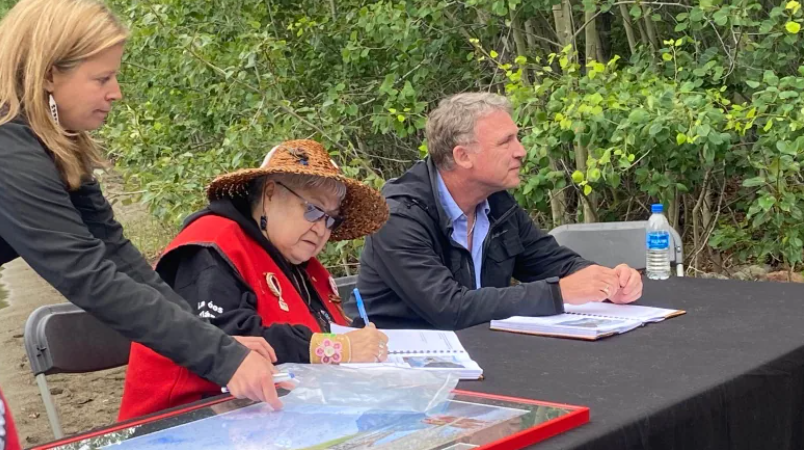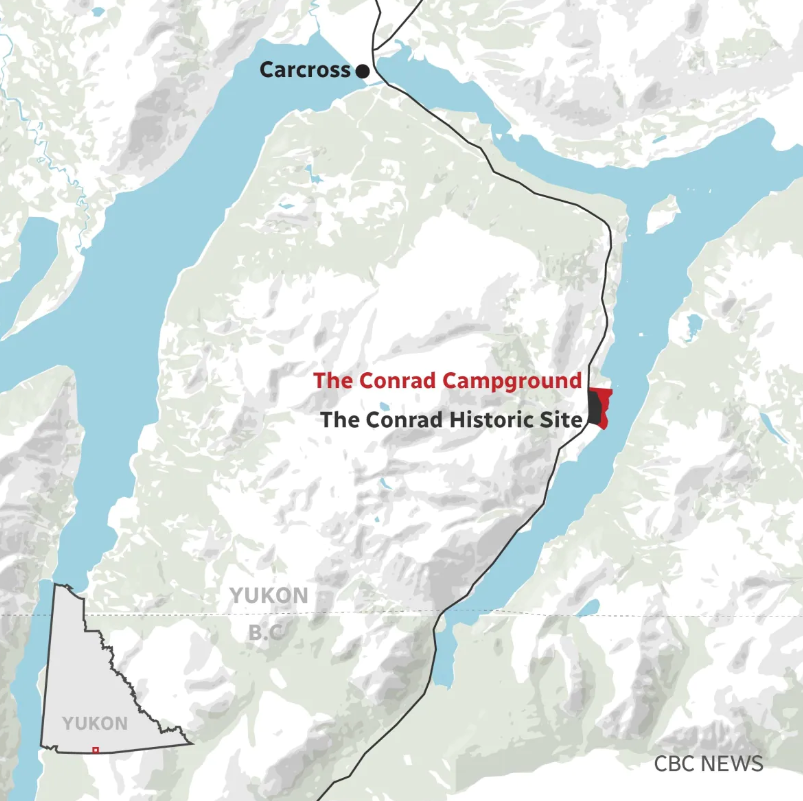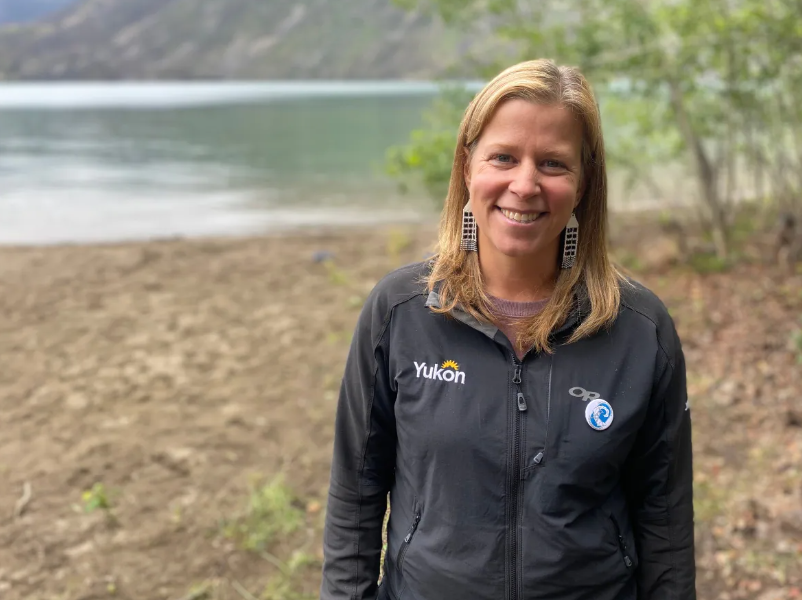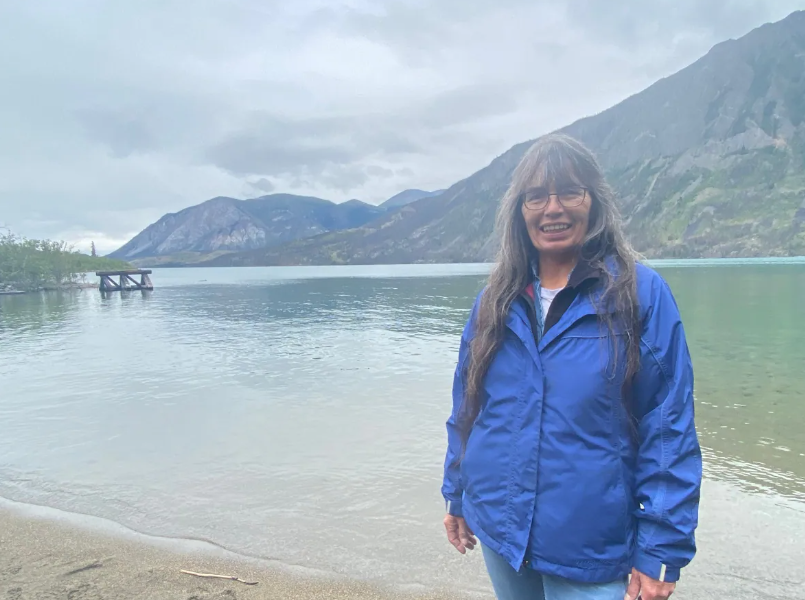Carcross/Tagish First Nation and Yukon gov’t sign plan to co-manage Conrad historic site

The Carcross/Tagish First Nation and the Yukon government signed a joint management plan Wednesday for the Conrad Historic site.
“[The plan] means the land is protected now,” said Carcross/Tagish First Nation Chief Maria Benoit.
The site was identified to be co-owned and co-managed under Carcross/Tagish’s First Nations final agreement, signed in 2005. It is about 14 kilometres southeast of Carcross on the western shore of Windy Arm / Tséi Zhéłe Méne, or Howling Rock Lake.

Benoit said the First Nation will help maintain the area and campground within the historic site, which will provide jobs for Carcross/Tagish citizens.
The territorial government said the 10-year Tséi Zhéłe/ Sinwaa Éex’i Yé / Conrad Historic Site Management Plan will also help Yukoners and visitors better enjoy the natural, historical and cultural value the historic site holds.
“The management plan covers development, it covers the conservation of the historic resources at the site and also the natural landscape,” said Rebecca Jansen, manager of historic sites with the Yukon government, adding it also covers interpretation and infrastructure.
Jansen said the plan ensures that development and activities in the area consider the community use and community values and the historical significance of the area.

Traditional fishing, hunting and camping site
The historic site was a traditional fishing, hunting and camping area used for thousands of years by the Tlingit and Tagish people.
“We would follow the fish, follow the moose, follow the berries. Whatever was in season, we would follow it and put our food up,” explained Colleen James, a Carcross/Tagish First Nation citizen who was part of one clan’s negotiating team that led to the agreement.
A mining town was built on the site in 1905 and abandoned nine years later in 1914. But at its peak, it had a population of more than 300 at its peak and a variety of buildings, including a hospital, two churches, several hotels and a Royal North-West Mounted Police office.
“It changed us quite a bit,” said James, adding that other people and the introduction of money came with the building of the townsite.
“It quickly moved the Indigenous people out of the area I think, at the time,” she said.
Negotiations
Negotiations for the management plan started in 2015 after the Conrad campground was proposed, according to Jansen.
She said the Carcross/Tagish First Nation wanted to ensure that the intentions of the final agreement were respected and that there weren’t any unintended impacts to the historic site while the campground was being developed.
Jansen said co-management of the site means everything that is done on it is done by consensus.
“We work together,” she said. “Nobody’s interests or point of views are more important, and it’s really a collaborative co-management exercise.”

Other co-managed heritage sites
Jansen said the territorial government has agreements in place to co-manage several sites with First Nations. They include the Fort Selkirk historic site with the Fort Selkirk First Nation, the the Forty Mile, Fort Cudahy, and Fort Constantine Historic Site with the Tr’ondëk Hwëch’in and the Rampart House and LaPierre House with the Vuntut Gwitchin First Nation.
She said the Na-Cho Nyäk Dun recently completed the management plan for Lancing Post, which the First Nation will manage itself.
She added the Yukon government is currently in discussions with Champagne and Aishihik First Nations on developing a management plan for Shäwshe, also known as Dalton Post.
Related stories from around the North:
Canada: Dene Nation seeks approval to search 15 residential school sites for unmarked graves, CBC News
Finland: Psychosocial support for Sami proposed ahead of Finland’s Truth and Reconciliation Commission, Yle News
Greenland: Greenland, Denmark initiate investigation into past relations, Eye on the Arctic
Norway: Can cross-border cooperation help decolonize Sami-language education, Eye on the Arctic
Sweden: Sami in Sweden start work on structure of Truth and Reconciliation Commission, Eye on the Arctic
United States: Alaska reckons with missing data on murdered Indigenous women, Alaska Public Media.



